Tempest Stealth Fighter Flying Demonstrator Takes Shape
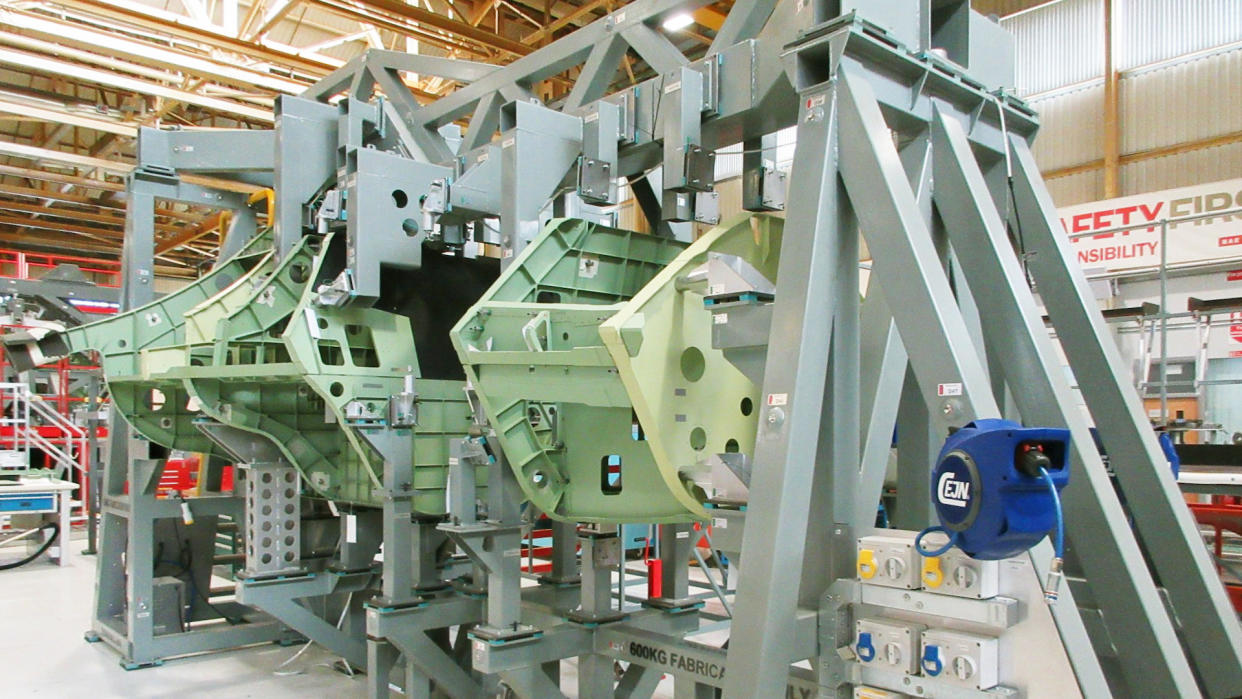
The United Kingdom is advancing the build of a new fighter demonstrator as part of its Tempest next-generation air combat program. The crewed flight test vehicle, so far only known as the Flying Technology Demonstrator, is planned to take to the skies within the next three years and its progress is an important boost for the Tempest stealth fighter and the wider Future Combat Air System (FCAS) programs, the future of which has recently begun to be questioned in some quarters.
At the Farnborough International Airshow in England today, Team Tempest released photos showing the progress made so far on the demonstrator aircraft. The program partners confirm that over 50 percent of the aircraft, by structural weight, is now being built or has already been completed. A pair of photos shows the forward fuselage section of the demonstrator taking shape on the production line at the BAE Systems facility in Warton, England.
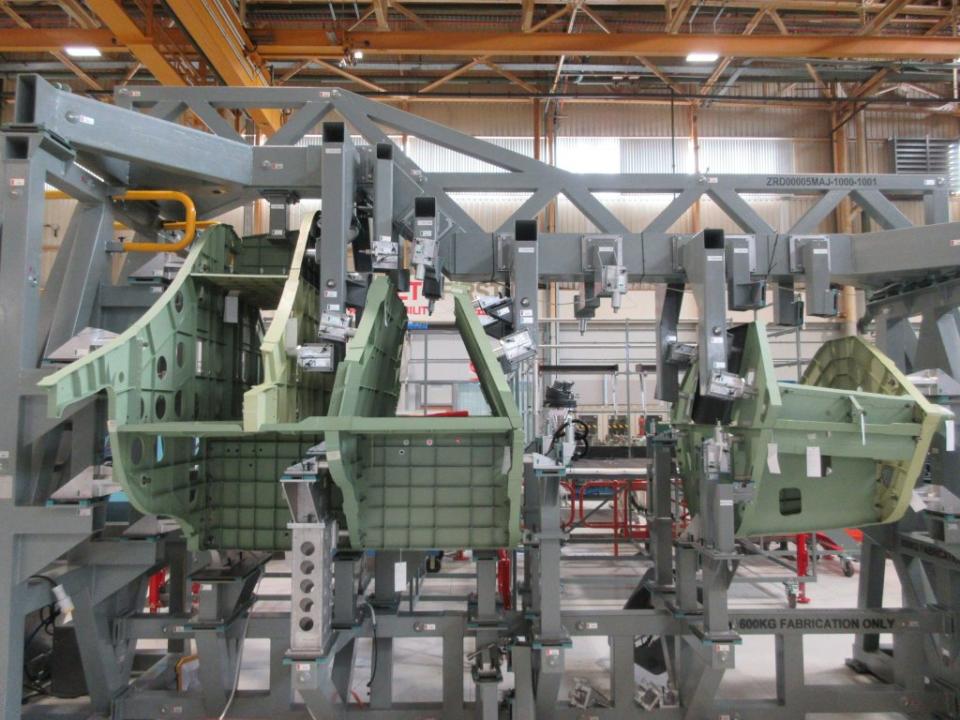
Further details of the demonstrator have also emerged. Team Tempest says the critical design review was completed in May of this year, although the manufacturing of components had already begun in 2023. Of these parts, 99 percent come from U.K. manufacturers.
Advanced new technologies are also being used to accelerate the production process, including hot isostatic pressing (HIP), in which materials are compressed under extremely high temperatures and pressures simultaneously. According to Team Tempest, the use of these technologies helps reduce lead times for components from four years to just six months, on average.
Breaking. Team Tempest partners reveal that manufacturing and assembly has started on the UKs crewed combat demonstrator – set to fly within next 3 years to derisk Tempest/GCAP. Over 50% of structure by weight now being built. #FIA2024 #avgeek pic.twitter.com/BgJgzE1iyz
— Tim Robinson (@RAeSTimR) July 24, 2024
Still, very little is known about the demonstrator aircraft, other than the fact that it will be powered by a pair of Eurojet EJ200 turbofans. These are the same engines used in the Eurofighter Typhoon, but they will not be used in the production Tempest, which will receive an all-new powerplant now under development.
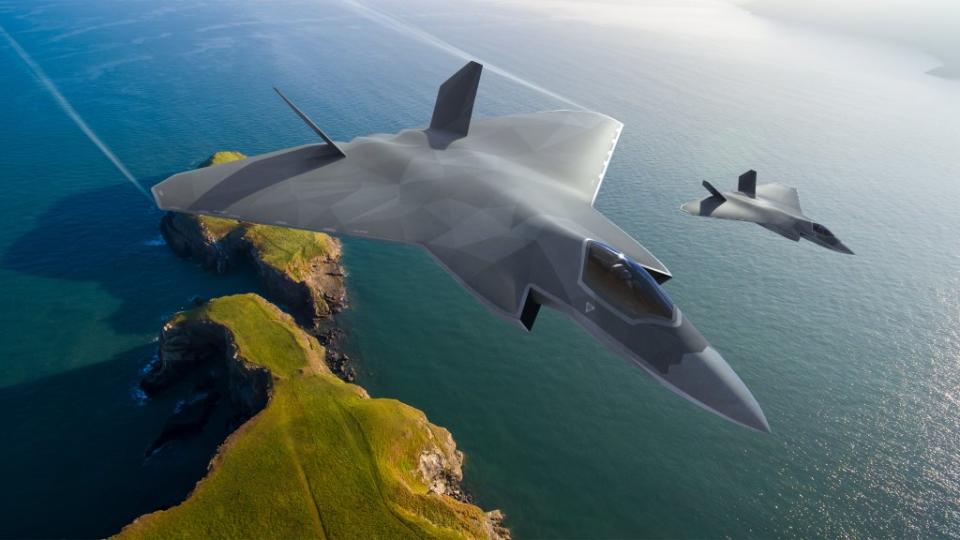
There remain big questions about the other elements of the demonstrator. In particular, it’s unclear how close it will be in terms of size and configuration to the Tempest. However, with a separate avionics testbed also being completed, on the basis of an adapted Boeing 757 airliner, this would seem to suggest that the demonstrator will be concerned with proving the configuration and dynamics of the Tempest design and not simply a platform for testing subsystems.
This would parallel the United Kingdom’s approach with the British Aerospace EAP, a fighter demonstrator that first flew in 1986 and proved the concept for the Typhoon that followed it. It was powered by engines used in the earlier Panavia Tornado combat aircraft, but its basic configuration was similar to that of the Typhoon. The new aircraft now being built at Warton is, notably, the first new flyable U.K. fighter demonstrator since the EAP.
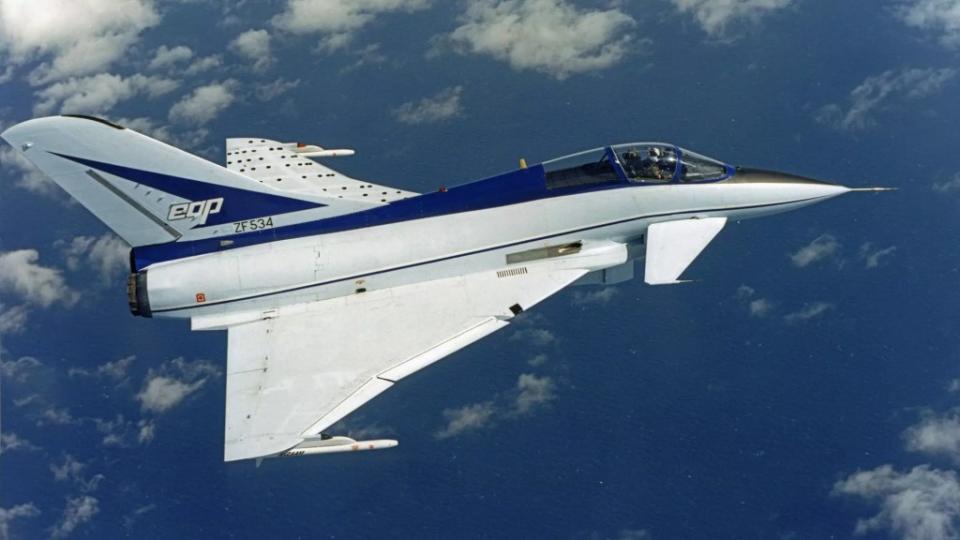
Once again, however, we don’t know for sure how much in common the demonstrator will have with the Tempest. Major advances in computer simulation since the days of the EAP also mean that considerable amounts of critical test data can now be accumulated in the lab, rather than in actual test flights.
In the past, BAE Systems has said that, by using digital processes including auto-coding, in which entire program codes are created automatically, safety-critical systems software can be developed in “a matter of days rather than weeks.” This software is then proven in a simulator, testing, for example, the behavior of flight control systems during complex flight maneuvers. In this way, it’s expected that a great deal will be known about the demonstrator’s handling and performance before it even takes to the air. That will also help shorten the flight test program for the demonstrator.
At the same time, it’s also unclear how much commonality will exist between the final Tempest design and the latest 1:1 scale model of the aircraft that was unveiled on the first trade day at the Farnborough International Airshow this week. You can read our analysis of that concept model here.
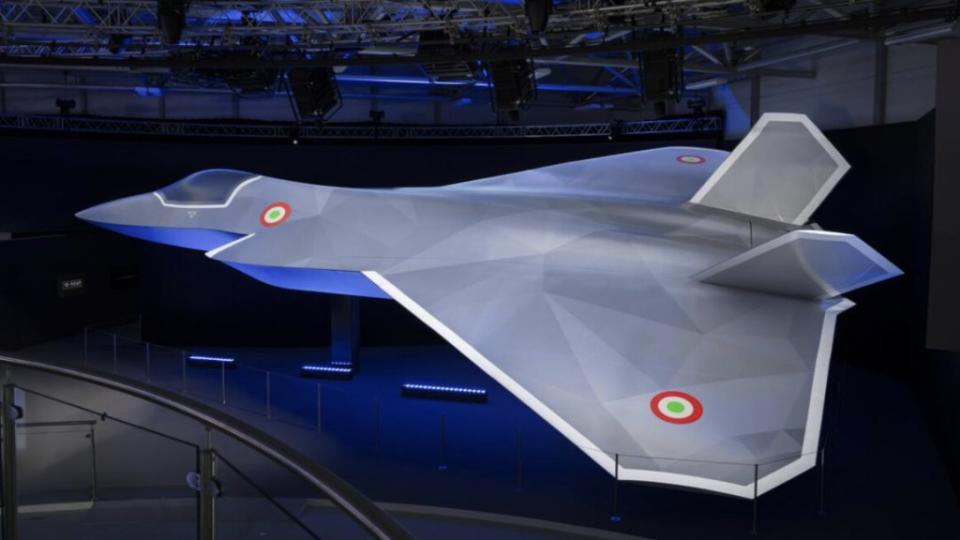
Leonardo
It’s also important to note that there had been previous significant changes in the appearance of conceptual studies and mock-ups representing the Tempest, as you can read about here.
Whatever the case, the development and manufacture of the demonstrator will provide valuable experience that will be fed into the Tempest program, reducing the risk for both this crewed sixth-generation fighter and the broader programs that it falls under. One of these is the aforementioned FCAS, a wide-ranging U.K. air combat initiative that will include uncrewed platforms, next-generation weapons, networks and data sharing, and more.
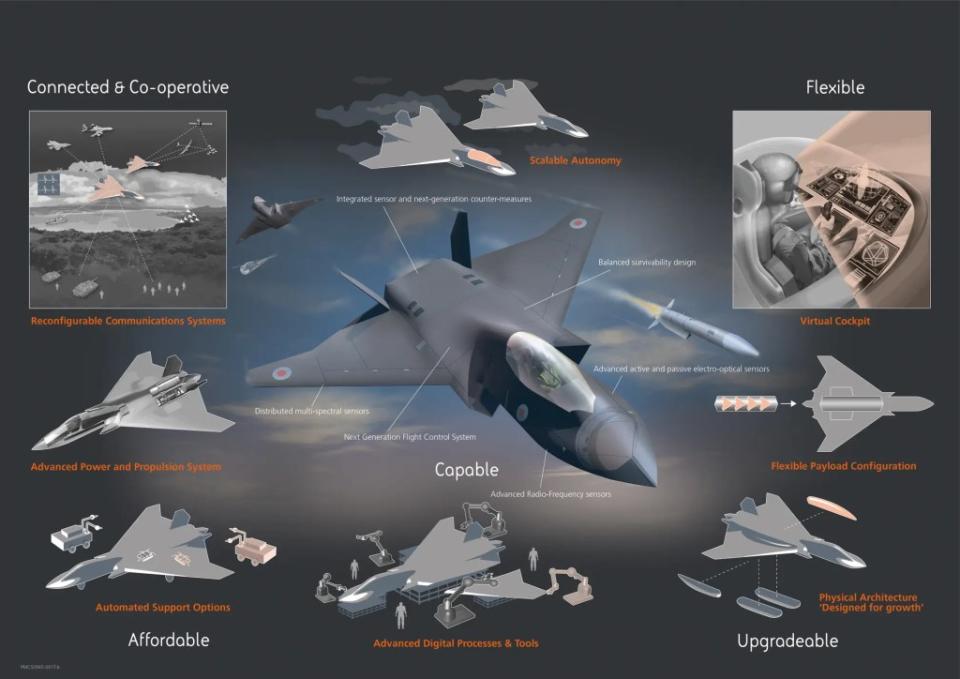
The second is the Global Combat Air Program (GCAP), an international collaborative program that involves the United Kingdom, Italy, and Japan and seeks to field the aircraft, plus associated support and training, in each of these countries.
Plans for a supersonic crewed demonstrator aircraft for the Tempest program were first announced in July 2022, together with the aim of having it flying by 2027.
Previously, the closest we’d got to seeing the Flying Technology Demonstrator was during trials of its Martin-Baker ejection seat. This involved a “representative forward fuselage design” that accommodated the Martin-Baker Mk 16A ejection seat, during four tests using a rocket-propelled sled, with differently weighted instrumented mannequins being ejected at 280 knots and 450 knots.
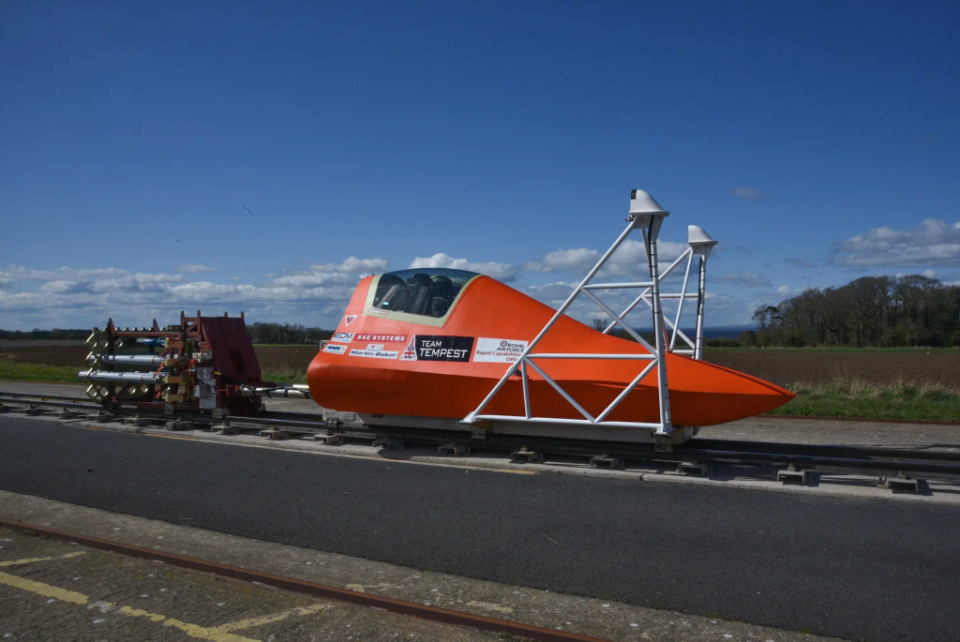
As well as the demonstrator’s crew escape system — tests of which have apparently been completed — there has been parallel work on the powerplant. Aerodynamic engine testing has taken place at the Rolls-Royce facility in Filton, England. Novel technologies are also being used for the powerplant system, including using “advanced manufacturing processes” to produce the engine duct for the serpentine intake.
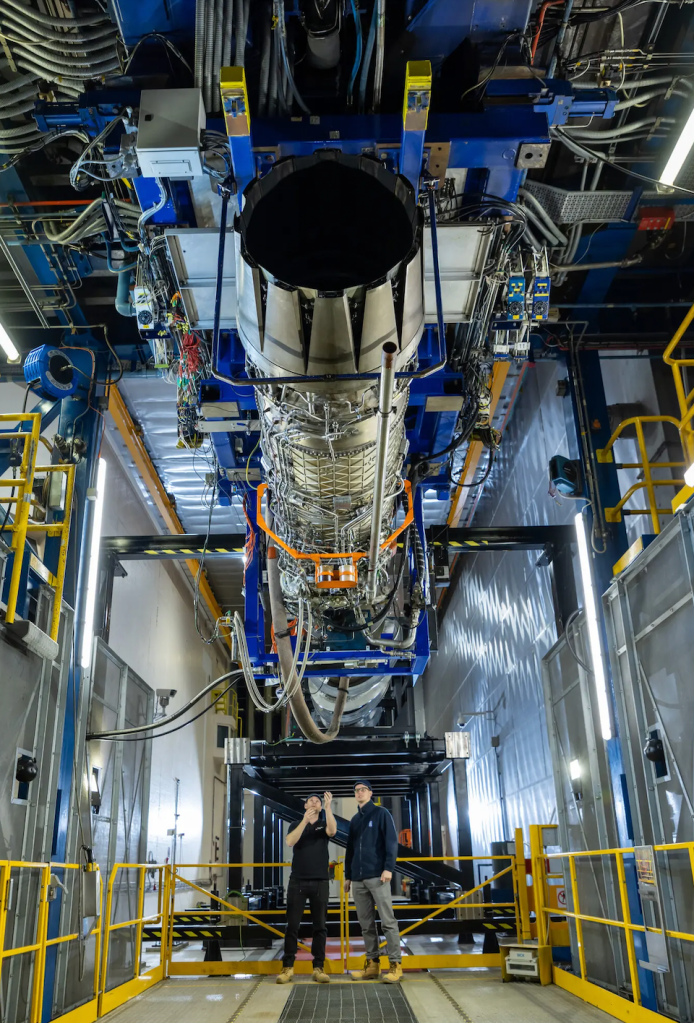
Then there is the ground-based simulator that has been developed for the project at a new facility in Warton. A digital representation of the Flying Technology Demonstrator has already been ‘flown’ extensively simulator, with a team of pilots from BAE, Rolls-Royce, and the U.K. Royal Air Force.
The 757-based flying testbed for the Tempest program, named Excalibur, is also being converted, with its sensors expected to include the Multi-Function Radio Frequency System radar from Leonardo, plus communications systems and electronic warfare equipment. The end result will be very similar in concept to the other flying testbeds used for similar development work in the United States and China.
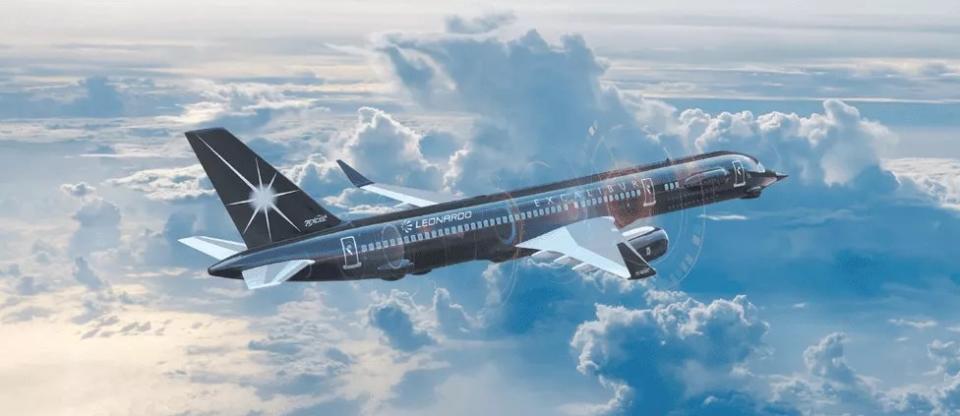
While the Flying Technology Demonstrator is so far understood to be a British effort, it’s possible that Italy and Japan could become involved, which would reflect the tri-national nature of the GCAP program. As well as contributing expertise and funding to this part of the program, such a move might also work to allay reported fears from those two countries about the future of the Tempest and FCAS/GCAP within the United Kingdom.
UK, Japan and Italy have agreed to launch the Global Combat Air Programme to develop a future fighter jet.
1⃣ Entering service from 2035
2⃣ Combining defence industry expertise
3⃣ Creating high-skilled jobs in the UK and partner countrieshttps://t.co/oUNNdClgl7pic.twitter.com/HdUvUqp28k
— Ministry of Defence
(@DefenceHQ) December 9, 2022
As we recently reported, there have been concerns raised that a reassessment of U.K. defense spending priorities may affect these future air power efforts, with one possible outcome being a reduction in the priority assigned to the Tempest program. It’s unclear how such a move might affect the demonstrator effort, but this is already assigned a very aggressive — and arguably optimistic — schedule.
Team Tempest is relying heavily on digital engineering to speed the development of both the demonstrator and the fighter that will follow it. While it promises much, there have also been more questions of late, including from senior U.S. Air Force officials, as to whether the digital engineering approach necessarily delivers on this.
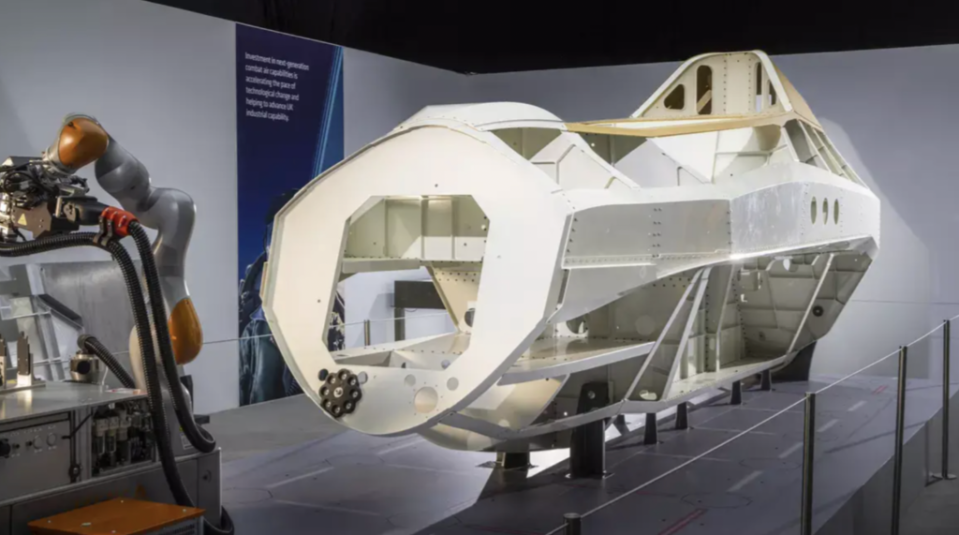
Aside from these questions, there are inherent challenges in developing from scratch a new fighter, especially one incorporating stealth technologies, which will be fundamental to the Tempest. Simply put, long development times and high costs are essentially inevitable. Not only is a new crewed fighter under development but FCAS is also expected to include advanced uncrewed aircraft as well as new-generation air-launched weapons, all of which bring their own elements of risk — as well as big costs.
Furthermore, the finished Tempest fighter is expected to be in service by 2035.
As we wrote back in July 2022, when the demonstrator was first announced:
“The capabilities promised by the Tempest look convincing, on paper, at least, although they may look less so once the aircraft is actually available for service. After all, the timeline as it stands looks to be exceedingly ambitious. If, as stated, a demonstrator starts flying within the next five years, that could leave as little as eight years between its first flight and the planned initial operating capability for the production-representative Tempest. Compare this with the Typhoon, for which 17 years passed between the demonstrator’s first flight and service entry.”
Now it also looks as if a political dimension, at least on the U.K. side of the program, could further complicate matters, with the Tempest potentially competing for funds with various other big-ticket defense programs, including new nuclear-powered ballistic missile submarines.
With plenty of challenges ahead, today’s announcement of progress in building the Flying Technology Demonstrator will surely be welcome.
Contact the author: thomas@thewarzone.com






